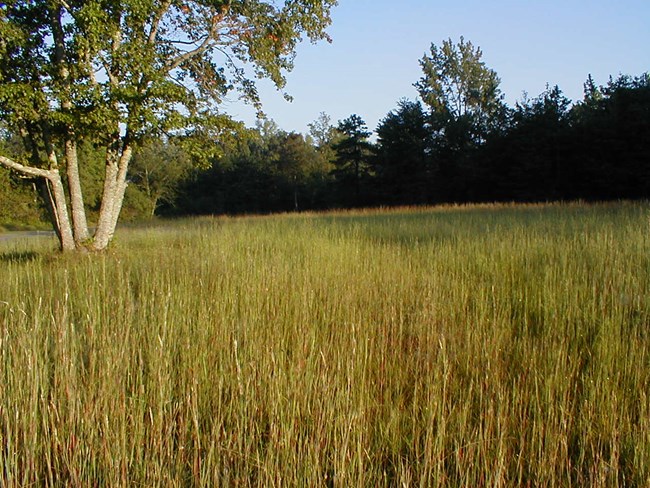
NPS Photo
Early in 1781, a pivotal battle in the Revolutionary War occurred at this frontier pasturing ground located in South Carolina. At the battle of Cowpens, the Continental Army was victorious over a larger force of British regulars, and it was a link in a chain of British defeats in the South that led ultimately to final defeat at Yorktown. Cowpens National Battlefield is an 842 acre battlefield with a mixture of oak-hickory forest bordering open fields and small woodlands. Topographically, the park is relatively flat with a few small streams that form deeply cut channels.
The Cumberland Piedmont Network I&M program has provided this park with a vegetation community classification and map, a wetlands inventory, and updated vascular plant and vertebrate species lists. During the vegetation community classification work, 15 distinct associations were documented and mapped, including a rare type of white oak-black oak woodland.
The network monitoring program at this park includes four vital signs that involve repeated visits to established sites, following procedures established by each monitoring protocol. These four vital signs are: forest vegetation communities, invasive species early detection, ozone/foliar injury, and water quality. Water quality monitoring began in 2003 and continues on a quarterly schedule every-other-year (odd years) at four sites. Forest monitoring began in 2011–2012 with the establishment of 16 long-term monitoring plots. More new plots will be established over the next couple years, followed by a five-year revisit schedule, occurring in mid-June. This park has a continuous ozone monitor and foliar injury is assessed on-site every six years, beginning in 2009. The Invasive Species Early Detection protocol was completed in 2012 and will be used by field crews to monitor for priority exotics during their scheduled field work.
Park managers are using inventory and monitoring data to create resource stewardship strategies for achieving desired future conditions. The links to inventory and monitoring reports are provided on this page.
For more Information contact:
Steve Thomas, Network Program Manager, CUPN offices at Mammoth Cave NP
Select a Park:
Select a Species Category (optional):
Visit NPSpecies for more comprehensive information and advanced search capability. Have a suggestion or comment on this list? Let us know.
Last updated: January 12, 2021
